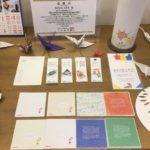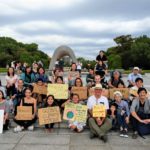“Harmony Should Be Valued” World peace emanating from calligraphy
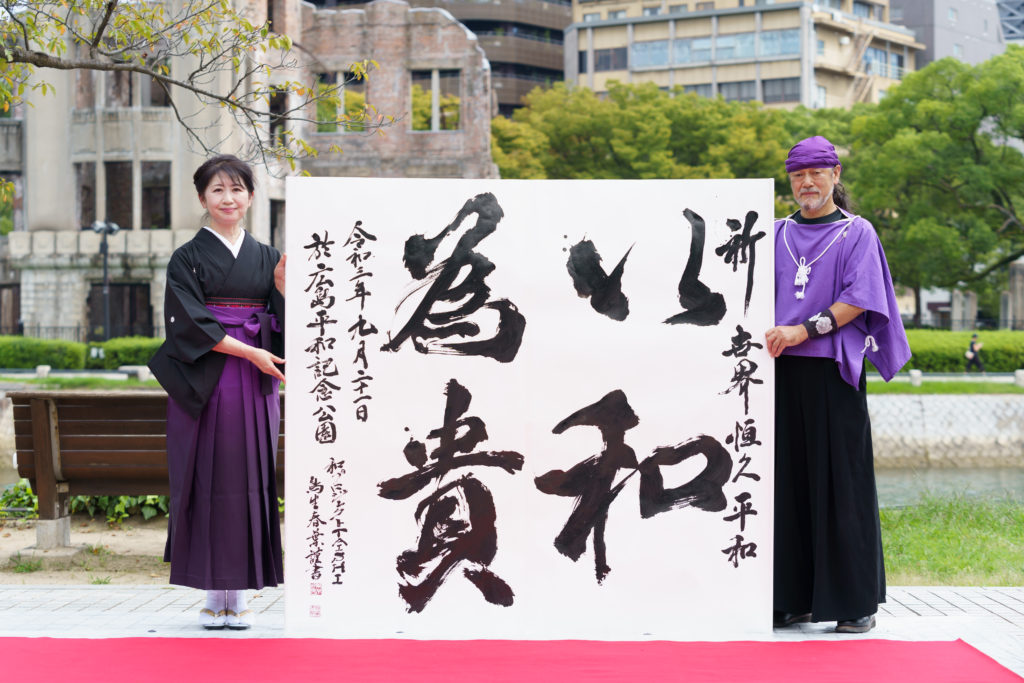
September 21st of each year is designated as International Day of Peace (World Peace Day), a day of nonviolence and worldwide ceasefire, when the United Nations calls on countries around the world to ban hostilities. At Hiroshima’s Peace Memorial Park, a calligrapher put brush to paper in the hope for world peace and the end of the Covid-19 pandemic.
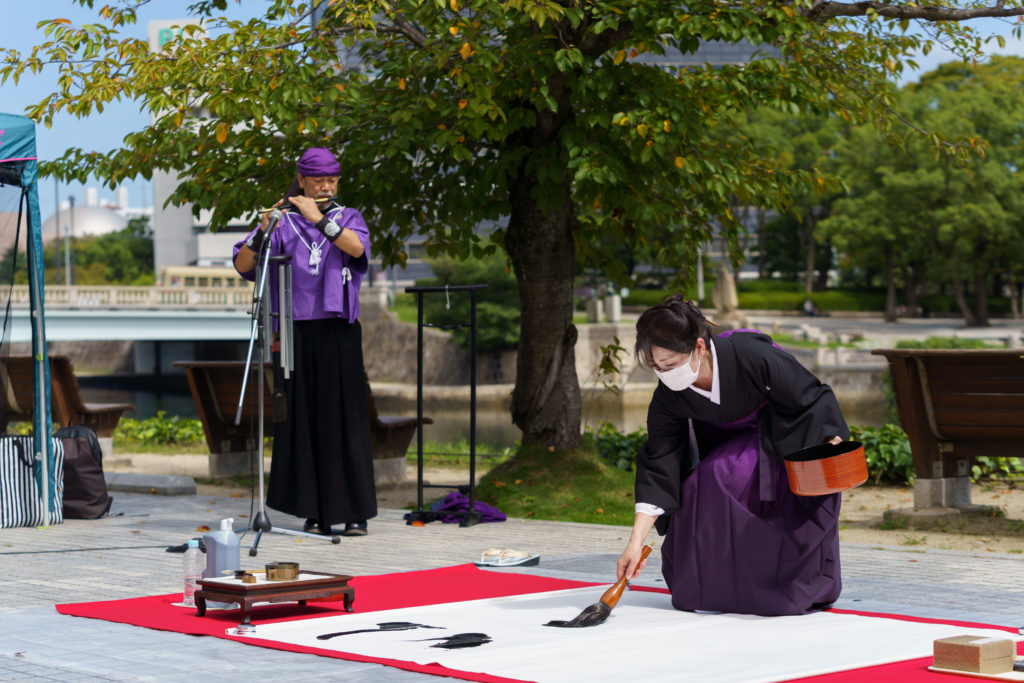
Starting at 11:00 in the morning, a calligraphy performance entitled “9.21 World Peace Prayer” was held in front of the peace bell in Hiroshima’s Peace Memorial Park. Against a background of graceful Japanese flute played by performing arts evangelist and musician Mr. Yoshiyuki Kodani, Ms. Shunyo Toryu, a calligrapher from the city of Kure, mindfully painted large black characters on paper. Under normal conditions, the event would have been held in conjunction with calligraphy club members from a high school in the prefecture, but with this year’s declaration of a state of emergency, the performance took place with just two performers.
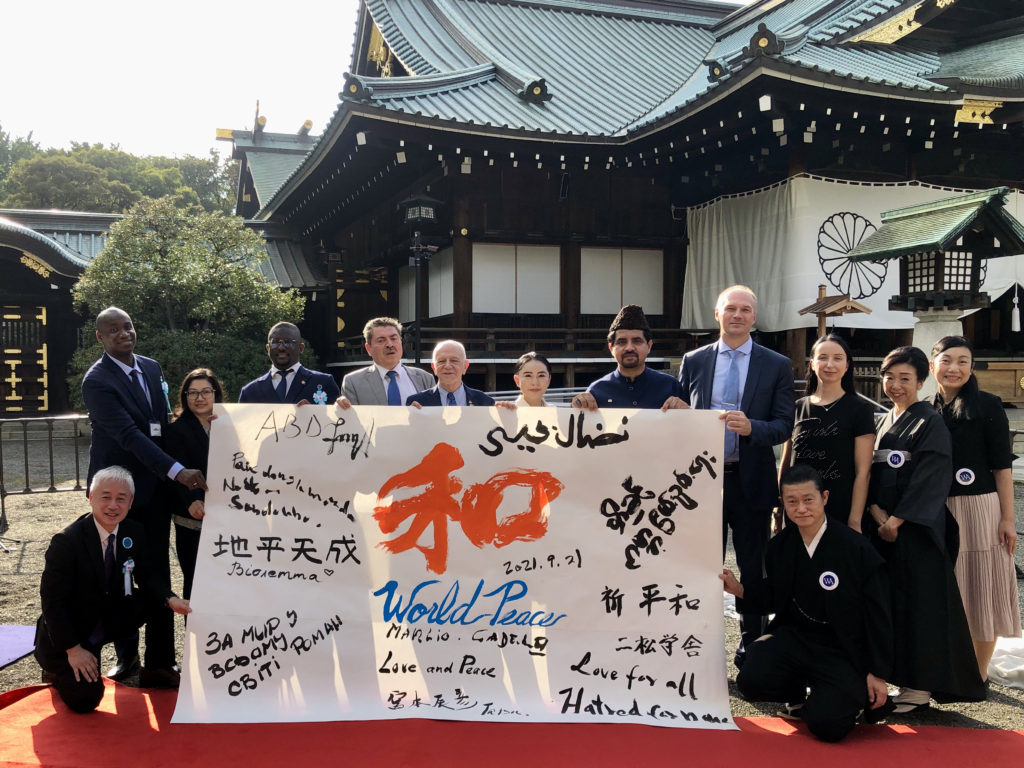
As a matter of fact, calligraphy events for world peace entitled “9.21 World Peace Prayer” were held on this day not only in Hiroshima’s Peace Memorial Park, but also in Nagasaki Peace Park, Yasukini Shrine in Tokyo, in gokoku shrines around Japan, and even in Mexico.
”This event has been held since 2017 to counter terrorist attacks around the world that have been happening since the attacks in America on September 11, 2001. Its major aim is to communicate the WA spirit of love and peace; circulation, harmony, and tolerance through calligraphy and to eliminate war and hatred from the world.”
These were the words of Tatsuhiko Miyamoto of WA Project TAISHI, the organization that organizes “9.21 World Peace Prayer.”
”At Yasukuni Shrine this year, Japan-based ambassadors from five countries (Ukraine, the Republic of Guinea, the Republic of San Marino, the Republic of the Union of Myanmar, and the Lebanese Republic) also participated in the event, writing messages of peace. At Ishikawa Gokoku Shrine in Kanazawa, Ishikawa Prefecture, a foreigner who is a disciple of a Japanese calligrapher took up the brush and made a dedication. One of the aims of the event is to communicate the WA spirit through calligraphy and to carry on the event with the participation of many people from other countries.”

Toryu, who gave the performance in Hiroshima, says that it is important to also make connections with next generation while conveying this message to the world.
”My grandfather’s job was in connection to the navy, which had a shipyard in Kure, and his brother was in the navy, so I grew up hearing stories about the war from people like my father and my uncle, and of course my grandfather too. My maternal grandmother also always used to talk about fleeing to the air raid shelter at the time of the air raid on Kure.
When I thought about what I could do to communicate the experiences of the generation who know war— as one of the duties of people who were born and raised in Hiroshima—I felt that I could use calligraphy to get people around the world to feel something, however small. So this is what I do.”
On World Peace Day last year, Toryu did a performance with members of the calligraphy club at Hiroshima Inokuchi High School.
”It was an extremely valuable experience for me to think about world peace with young people through calligraphy. Above all else, it gave me energy. I feel that the students also had a wonderful time. Unfortunately, we were not able to do the same thing this year, but I do hope that when the day comes when people from all over the world are able to visit Hiroshima once again, we will be able to have an event wishing for peace in which both young Japanese people and many people from all over the world can experience calligraphy.”

With powerful brush strokes and with a sincere desire for world peace, Toryu wrote the characters 以和為貴 (harmony should be valued), sentiments that are said to have been conveyed by Prince Shotoku in the first clause of Japan’s Seventeen-Article Constitution of 604.
“Everything is to be revered: peace, people, and people’s feelings. The meaning conveyed by the characters I wrote is that it is important to respect every thing and to live with respect for each other. This year marks exactly 1,400 years since Prince Shotoku’s death. As I wrote the characters, I held a wish in my heart for people all over the world to be considerate towards each other despite their different points of view, to pray for peace, and to work together even harder to overcome the pandemic.”

Shunyo Toryu
Calligrapher. Born in Kure and based in Hiroshima, she is active as a calligrapher in various parts of Japan and around the world. Researching the mystery of letters and the power of words (known as kotodama in Japanese), she creates “calligraphy that resonate with the heart” and “calligraphy that is alive” through activities such as dedications to shrines and temples.
HP:http://www.anniversary.co.jp/r-fudehana/
Facecalligraphy: https://www.facebook.com/%E9%B3%A5%E7%94%9F%E6%98%A5%E8%91%89-Toryu-Shunyo-330780297362879/

WA Project TAISHI
WA Project TAISHI organizes events that communicate the WA spirit (circulation, harmony, tolerance) through calligraphy, and also calls for the realization of world peace. Calligraphy events for peace are held all over Japan each year, with a focus on February 11th, February 23rd, April 3rd, and September 21st.
HP:https://www.tatsu.ne.jp/wa/
Tags associated with this article





-150x150.png)
